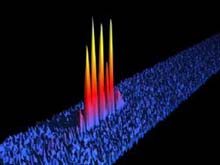Latest News

Marine reserves have rapid and lasting effects
Marine reserves have rapid and lasting impacts on organisms inside reserves, according to scientists at the University of California, Santa Barbara.
In a paper published in the current issue of Ecology Letters, the researchers reviewed 80 studies from ‘no-take’ reserves, where it is illegal to extract organisms in any way. These showed that density, biomass, average size and diversity of organisms inside these reserves reach much higher levels within a short period of time, usually one to t

An Escort Protein Discovered for Ubiquitous Ras, Whose Gene Mutates in 30 to 60% of All Cancers
In order to function properly, living organisms need to eliminate defective cells. This rule is however not always abided by, as evidenced by cancer cells which no longer carry out the tasks originally set for them and yet continue to proliferate, as though they were ” ignoring ” commands from their environment. Cancer can thus be defined, inter alia, as an ailment affecting signal transduction.
A team working at the Institut Curie (Inserm Unit 528) have been looking into information-con

Fresh bunch of old flowers
Fossil plants form new branch in flower family tree.
Fossils recently plucked from rocks in China are the first representatives of a hitherto unknown group of flowering plants, say their discoverers Ge Sun of Jilin University and colleagues 1 .
They also add to growing evidence that flowering plants, which now dominate the land, originally emerged from the water.
The researchers call the group Archaefructaceae. Its members probably flourished in lake

Ultracold Atoms Form Long-Lasting Waves
At sufficiently cold temperatures, the atoms in a gas can form what is known as a Bose-Einstein condensate (BEC), losing their individual identities and merging into a single quantum state. The phenomenon has fascinated physicists ever since gaseous BECs were created in the laboratory in 1995 (although the possiblity was first postulated some 70 years earlier), and a flurry of recent research has uncovered all kinds of remarkable condensate properties. Now researchers writing in the journal Nature ha

A round home robot aids the elderly
Rollo, the home robot, has been developed by the Laboratories of Automation Technology, Information and Computer Systems in Automation and Control Engineering of the Helsinki University of Technology for seven years and is presently being adapted for home care and independent living at home. Rollo is part of the “Turning Well-Being Technology into a Success Story” – (iWELL) technology programme of the National Technology Agency Tekes.
“The reason why we arrived at a ball-shaped solution was

Mobile phones and the inner ear
A new technique has been developed by researchers in the Netherlands to look at the effect of radiation from mobile phones on complex structures like the inner ear and eye. The technique called `quasistatic zooming` will help researchers calculate the amount of radiation from mobile phones absorbed by human tissue on scales of less than one millimetre. The work is published today in the Institute of Physics journal, Physics in Medicine and Biology.
Concern about the potentially hazardous e










